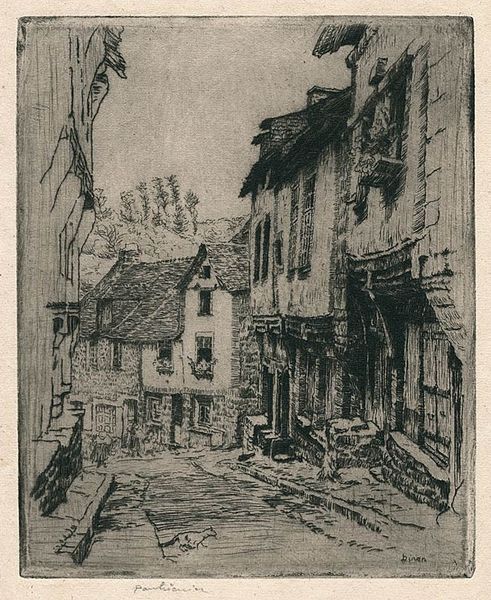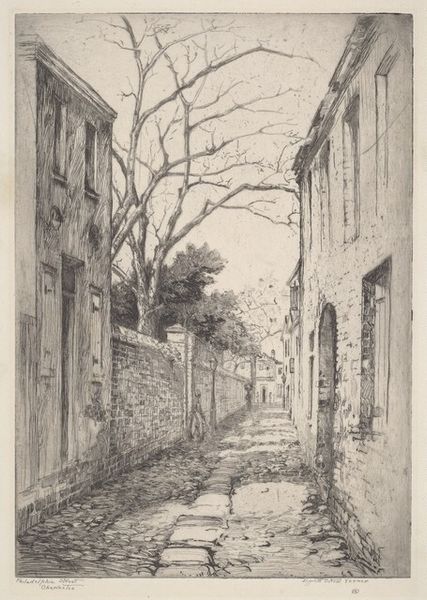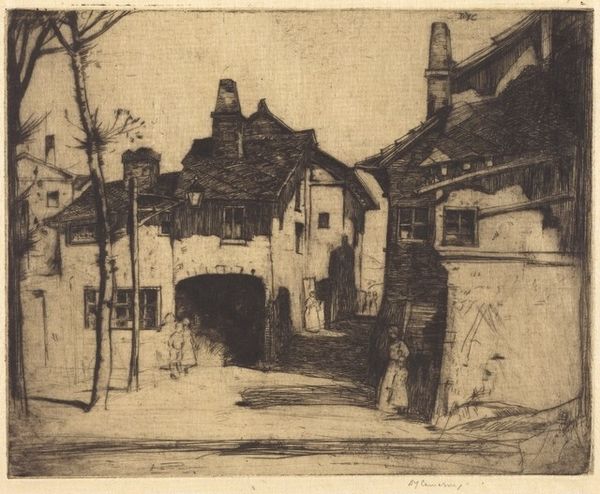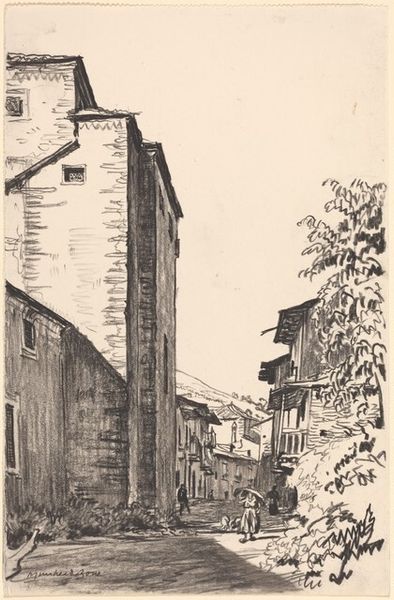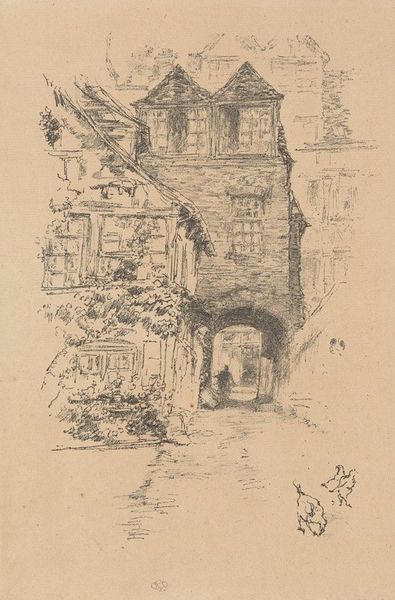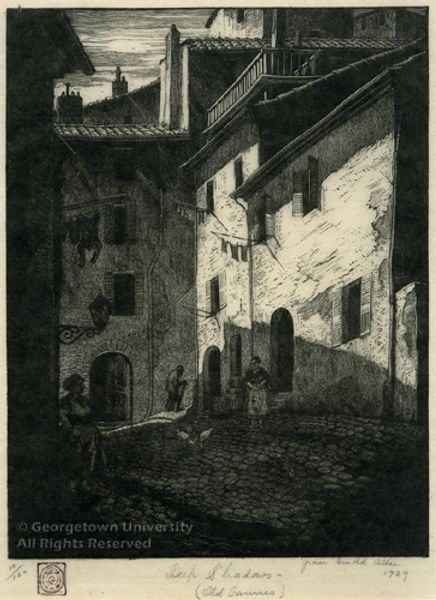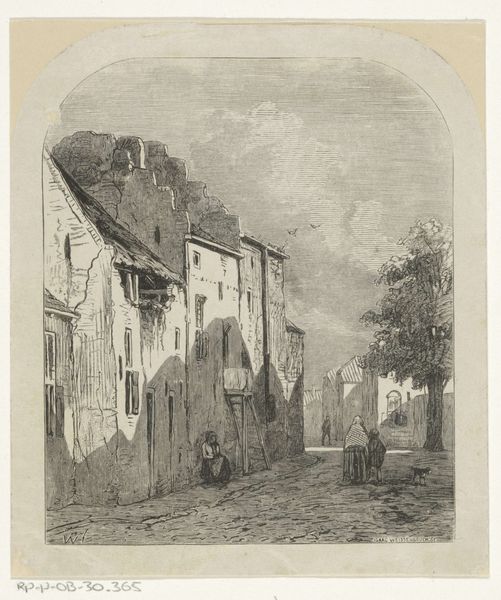
drawing, print, etching
#
drawing
# print
#
etching
#
landscape
#
etching
#
cityscape
#
realism
Copyright: Public Domain: Artvee
James Abbott McNeill Whistler created this etching, "Street at Saverne," sometime in the late 19th century, a period defined by rapid industrialization and urbanization. Notice the stark contrast between light and shadow. Whistler uses this to evoke the atmosphere of a pre-modern European town. Saverne, located in the Alsace region of France, carried a complex history, shifting between French and German control amid political upheaval. This print captures a quiet, perhaps timeless moment in the street, seemingly untouched by broader conflicts. Whistler, an American expatriate, aligns himself with the Realist movement. He eschews grand narratives, focusing instead on the everyday. Yet, his choice of subject is not neutral. It reflects the artist's interest in the lives of ordinary people, and the cultural contexts that shape them. To fully appreciate this print, it’s important to look at the history of Alsace, 19th century printmaking, and Whistler's biography. These resources reveal the complex interplay between art, history, and social change.
Comments
No comments
Be the first to comment and join the conversation on the ultimate creative platform.

